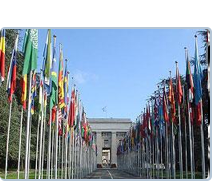Search
E-Newsletter Sign-up Push internal push
Search A Bill internal push
 |
Ebola Information Center for New York's 4th District
Like you, I have been carefully monitoring the situation regarding Ebola in the United States, especially in New York. I was thrilled to learn that earlier this week, Dr. Craig Spencer was declared Ebola-free and released from Bellevue Hospital in the City. The United States has now successfully treated most cases of Ebola in our country, but are continuing to monitor those who have come into contact with Ebola patients in the U.S. or West Africa. In the increasingly global world we live in, and New York’s unique position as a gateway to the United States, we must always remain prepared for any threat to our public health and safety. My staff and I are continuing to receive regular briefings on domestic and international response efforts. As we have seen over the past few months, our health care professionals on Long Island, New York and around the country have shown they are ready and able to meet this challenge. Below is critical information that you need to know about Ebola, its symptoms, and the many steps we are taking to prevent an outbreak in our State. My office will continue to keep you updated, so you have all the information needed to keep your family healthy, safe, and secure. If you’d like to share your thoughts and concerns on the situation, please click here to send me a message.
What is Ebola?
The Ebola virus disease (EVD), also known as Ebola hemorrhagic fever, is a severe and deadly disease in humans. It attacks the immune system and organ function, and causes a drop in blood pressure through severe dehydration and internal and external bleeding. If left untreated the disease can be fatal. Supportive care and treatment of specific symptoms can greatly improve chances of survival. There is no proven treatment or vaccination for the disease, but two potential vaccines are being tested.
It was first discovered in 1976 near the Ebola River in what is now known as the Democratic Republic of the Congo. Sporadic outbreaks have occurred in Africa since that time. Currently, the only countries that have been severely affected by Ebola are Guinea, Sierra Leone, and Liberia, located in West Africa. The current outbreak in West Africa has been exacerbated due to religious and cultural traditions, long periods of conflict and instability in the region, and weak health systems and infrastructure.
How is Ebola transmitted?
Ebola is not transmitted through the air like the flu. An individual can only contract the disease through direct contact with an affected individual or wild animal that is showing symptoms of the disease. Individuals who are not symptomatic are not contagious. An individual must come into direct contact with:
o Blood or bodily fluids (urine, sweat, saliva, feces, vomit, breast milk, or semen) of an infected individual.
o Contaminated objects, like needles and syringes, that have come into contact with the blood or bodily fluids of an infected person
What are the Symptoms of Ebola?
The incubation period is anywhere from 2-21 days, with an average of 8-10 days. At any point during this time an individual who has contracted the disease will begin to experience symptoms. A person who has come into contact with an infected person and is experiencing any of the following symptoms should seek medical care immediately.
o Fever
o Severe Headache
o Muscle pain
o Weakness
o Vomiting
o Diarrhea
o Abdominal (stomach) pain
o Unexplained hemorrhage (bleeding or bruising)
New York State Hospitals Designated to Handle Ebola Patients
New York State recently designated 8 hospitals across the State to deal with any Ebola patients, should an outbreak occur. These hospitals have voluntarily created isolation units that will be specifically-equipped to handle victims of the disease. Only trained medical professionals will be allowed to manage these units. The hospitals are working to ensure all personnel are properly trained within their entire network and gain valuable input by hosting town halls for all staff. The State is working to identify appropriate staffing levels and resources, specifically personal protective equipment (PPE), which has been stockpiled by the Department of Health. The State is continuing to monitor the need for additional Ebola-designated hospitals and alter existing safety protocols should the need arise. The designated hospitals are listed below:
o North Shore-Long Island Jewish Health System in Nassau County
o Stony Brook University Hospital in Suffolk County
o Bellevue Hospital in Manhattan
o New York-Presbyterian Hospital in Manhattan
o Mt. Sinai Hospital in Manhattan
o Montefiore Medical Center in the Bronx
o SUNY Upstate University Hospital in Syracuse
o University of Rochester Medical Center in Rochester

New York State Department of Health
Acting State Health Commissioner Dr. Howard Zucker issued an order requiring all hospitals, diagnostic and treatment centers, and ambulance services in New York State to follow new protocols for the identification, isolation, and medical evaluation of patients requiring care within 10 days. The order also mandated all staff be trained in-person in the proper usage and removal of personal protective equipment (PPE). The State Department of Health has been working with local health departments to identify challenges and needs, and will be conducting site visits to ensure standards are met in emergency department triage, care plan, PPE, and training. The State Department of Health has also held practice drills to prepare for a case of Ebola and learn from the experience.
On October 21, the State Department of Health joined representatives from the CDC, Greater New York Hospital Association, 1199 SEIU, and the Partnership for Quality Care hosted an Ebola education session for clinical and non-clinical health care workers at the Javits Center in New York City. The training included national and local-area infection control experts, as well as hands-on equipment demonstrations. To view this training, please click here.
Public Transportation and Safety
The Metropolitan Transportation Authority (MTA) has developed protocols, in coordination with the State Department of Health, to keep employees and customers safe. Personnel will be properly trained in the use of PPE to prevent infection and follow best practices and standards when cleaning MTA facilities. Increased messaging in all MTA facilities will help communicate protocols to customers.
The Governor’s office is working with local law enforcement officials to coordinate field advise police officers regarding recommended equipment and procedures to reduce possible contamination. Since they are on the front lines of possible contact, the State is continuing to work with first responders and law enforcement to ensure all protocols are enforced and followed in the transportation of an affected individual.
Travel to the United States
Earlier this month, the Department of Homeland Security and Customs and Border Protection, in coordination with the Centers for Disease Control and Prevention, mandated that all travelers originating from any of the three Ebola-affected West African countries must fly through any of the following five international airports upon arrival in the United States:
o John F. Kennedy International Airport in New York, NY
o Washington Dulles International Airport in Washington, DC
o Chicago O’Hare International Airport in Chicago, IL
o Newark Liberty International Airport in Newark, NJ
o Jackson Atlanta International Airport in Atlanta, GA
In addition to exit screening that takes place in the country of origin, these travelers will be monitored upon entry into the United States for up to 21 days (the incubation period for the disease) by a public health professional. Upon arrival at the airport, these individuals will be given a CARE (Check and Report Ebola) Kit, contains a tracking log, pictorial description of symptoms, a thermometer, guidance for how to monitor with thermometer, a wallet card on who to contact if symptoms arise and that they can present to a health care provider, and a health advisory infographic on monitoring health for three weeks. They will be required to report their temperature and any signs of symptoms to a health official on a daily basis during this period of time.
On October 26, New York State issued new monitoring and quarantine guidelines for health care workers returning from Ebola-affected countries in West Africa. If an individual arrives from an affected country and is displaying symptoms of the disease, they will be immediately transported to one of the eight designated Ebola hospitals in the State.
If they arrive after coming into direct contact with infected individuals, but are asymptomatic, they will be placed on a mandatory, 21-day quarantine at their home. Family and friends will be able to visit or stay with the individual. Two visits will be conducted daily by public health officials to monitor the individual’s conditions for possible symptoms. These individuals will be compensated by the State during the 21-day quarantine.
If an individual arrives from an affected country with no symptoms and no direct contact with an infected person, cases will be treated on a case-by-case basis. These individuals may be monitored for 21 days, but they would not be automatically quarantined.
The State also launched a free 24/7 public health information hotline that will be available to answer questions from the public: 1-800-861-2280.
On October 27, the CDC released new guidelines and risk levels for all health care workers returning from the affected areas in West Africa who are not showing symptoms of the disease. Monitoring will last for 21 days after potential exposure. State and local public health authorities are advised to use active monitoring rather than having people monitor themselves. See the chart below.
| RISK LEVEL | PUBLIC HEALTH ACTION | ||
|
| Monitoring | Isolation/Quarantine | Restrict Travel |
| HIGH risk | Yes - Direct Active Monitoring | Yes | Yes |
| SOME risk | Yes - Direct Active Monitoring | case by case assessment | case by case assessment |
| LOW risk | Yes - Active Monitoring | No | No |
| NO risk | No | No | No |
Direct active monitoring means public health officials will conduct in-person visits at least daily to review health status and check for symptoms. Active monitoring means public health officials are responsible for checking an individual’s health status at least once a day for possible symptoms.
Other Helpful Resources on Ebola and the Government’s Preparedness Efforts
Centers for Diseases Control and Prevention (CDC): Click here
National Institutes of Health (NIH): Click here
World Health Organization (WHO): Click here
White House Fact Sheet: Click here
New York State Department of Health: Click here
New York State Ebola Information Hotline: 1-800-861-2280
New York City Department of Health: Click here
-
HIDDEN_WEBSITE_VARIABLES
How to use: Insert <span class="EXACT_VALUE_LABEL_AS_ENTERED_BELOW"> </span> where you'd like the value to be populated.
Non-breaking space within span tags - - is required for WYSIWYG.
Label
(no spaces or special characters)Value
Comments (optional) repName John Smith helpWithFedAgencyAddress Haverhill District Office
1234 S. Courthouse
Haverhill, CA 35602district 21st District of California academyUSCitizenDate July 1, 2012 academyAgeDate July 1, 2012 academyApplicationDueDate October 20, 2012 repStateABBR AZ repDistrict 1 repState Arizona repDistrictText 1st repPhoto 
SponsoredBills Sponsored Bills CoSponsoredBills Co-Sponsored Bills
-
Office Locations Push
Office Name Location Image Map URL WASHINGTON DC OFFICE 2346 Rayburn House Office Building
Washington, D.C. 20515
Phone: (202) 225-5516
Fax: (202) 225-5758
http://goo.gl/maps/rqq9i GARDEN CITY OFFICE
300 Garden City Plaza, Suite 200
Garden City, N.Y. 11530
Phone: (516) 739-3008
Fax: (516) 739-2973
http://goo.gl/maps/BCEEO



















